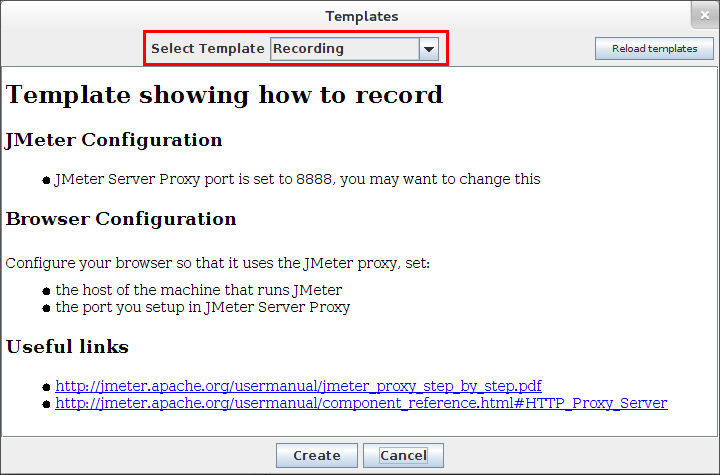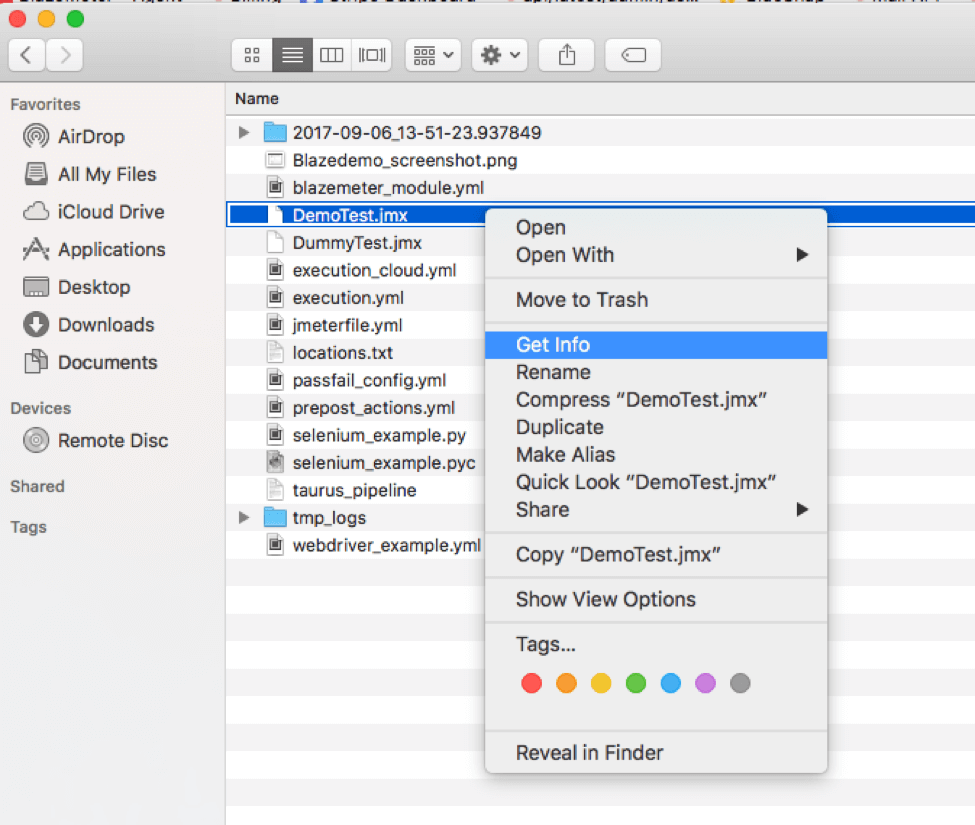- Jmeter Download Mac Os 10 14
- Apache Jmeter Free Download
- Apache Jmeter 3.1 Download
- Jmeter Tutorial Guru99
- Jmeter Download Mac Os Mojave
Written By: Swetha Pujari
Download Apache JMeter. We recommend you use a mirror to download our release builds, but you must verify the integrity of the downloaded files using signatures downloaded from our main distribution directories. Recent releases (48 hours) may not yet be available from all the mirrors. For having a working JMeter installation on MacOS, the latest compatible Java SDK needs to be installed from the Oracle Java SE page. Once on that main page, you should go to the 'Java Platform, Standard Edition' page and then download and install the Mac OS X.dmg file. Improve this answer.
Introduction
JMeter tests can be done on GUI and non-GUI in a headless front, both of which are easy to set up for JMeter enthusiasts.
However, there are instances where developers/remote stakeholders/shared testing teams have to execute the Performance tests on different machines.

Even when the testing team does not have any reservations around sharing the testing scripts, the knowledge transfer on how to execute Jmeter scripts is an exhaustive process. There is so much to hand over from test data, folder structures, understanding active listeners, and finally, the execution set up. So, how do make things simple?
Solution
To make the hand-over simple, one can execute JMeter test scripts via Dockers. It reduces the effort of setup significantly for both the parties involved.
Only three things required to get things moving:
- JMeter Docker Image
- Test scripts and Data files
- JMeter test run command
Benefits
Step by Step Guide
In a few easy steps, you can execute your first JMeter load test run using Dockers in the local machine.
Please note that this article does not discuss what is Docker and the inner workings of Docker in the interest of keeping the article short and crisp.
Pre-requisites (One Time Activity):
- System: Windows / Mac OS
- The demonstration has been given by using a Windows Machine for the setup. The process to set up on Mac OS is also pretty straightforward
- You must have power user or admin rights on the PC. This is optional but good to have the admin right to avoid unusual restriction.
- Software: Docker Desktop & Windows PowerShell (pre-installed with OS)
- Install the latest version of Docker desktop on your windows machine. Refer to the below URL: https://hub.docker.com/editions/community/docker-ce-desktop-windows
- Repository: GitHub Repository Set up
- Upload the Project – test scripts to a version repository such as GitHub.
- This repository will be used to share test scripts with development or any remote teams
- For this article, some sample test scripts are placed in the given GitHub URL. https://github.com/swethapn/blazeDemo
- Folder Structure:
- Create the below folders structure in the C directory of your machine
- jmeter-base (Root Folder)
- Under this create 3 sub-folders (Refer to Figure 02)
- html
- logs
- Project Folder (say TestBlazedemo) – In this folder, test-related files like JMX, CSV, PDF are saved (Refer to Figure 03).
- Create the below folders structure in the C directory of your machine
- Pull JMeter Image
- In this step, you have to pull the Docker Image of JMeter instead of installing it from the Apache site. You can pull the JMeter image by Launching PowerShell CLI and executing the command to download JMeter Image. The command is:
docker pull swethapn14/repo_perf:JmeterLatest - This is also one-time activity. You should see a message that the Pull is successful. As I already have it, I see that the image is up to date.
- In this step, you have to pull the Docker Image of JMeter instead of installing it from the Apache site. You can pull the JMeter image by Launching PowerShell CLI and executing the command to download JMeter Image. The command is:
Test Execution Steps
- Download GitHub Scripts
- Place your JMeter/JMX test scripts in the local folder. The local folder is the same which you have created in pre-requisite Step 4
Example: C:/jmeter-base/TestBlazedemo - Remote or Development teams to download the test scripts from the GitHub repository/SharePoint to the local path
- TestBlazedemo can be downloaded from my public GIT repository: https://github.com/swethapn/blazeDemo
- Place your JMeter/JMX test scripts in the local folder. The local folder is the same which you have created in pre-requisite Step 4
- PowerShell CLI
- Run the JMeter Command to execute Load tests against the test script
- docker run-v C:/jmeter-base:/workspace swethapn14/repo_perf:JmeterLatest -Jthreads=10 -Jrampup=20 -n -t /workspace/TestBlazedemo/Blazedemo.jmx -l /workspace/logs/Blazedemo_10Vu.jtl -e -o /workspace/html/10VuReport
- JMeter Atrributes:
- Jthreads – Number of users for the load test
- Jrampup – The time for the users to initiate (in seconds)
- Change the test script when needed
- Log file’s name to change every test run
- Html report name to change for every test run
- Test Results
- Once the test is completed then go to the ‘html’ folder given in the command and find the index.html to view the test results.
- Example: C:/jmeter-base/html/10VuReport/index.html
JMeter Command Explained
JMeter command to execute test runs via Docker is
docker run -v C:/jmeter-base:/workspace swethapn14/repo_perf:JmeterLatest -Jthreads=10 -Jrampup=20 -n -t /workspace/TestBlazedemo/Blazedemo.jmx -l /workspace/logs/Blazedemo_10Vu.jtl -e -o /workspace/html/10VuReport
The command does the work needed to execute a load test with ‘10’ users that will ramp up in ‘20’ seconds. The users inject traffic on the test script Blazedemo.jmx and write the results to a log file named Blazedemo_10Vu.jtl. After the test finishes, the JMeter HTML report will be automatically generated & placed in the html/10VuReport folder in the workspace (i.e. C:/jmeter-base)
Command to execute JMeter tests on Proxy with Security Layer
docker run -v C:/jmeter-base:/workspace swethapn14/repo_perf:JmeterLatest –H proxy.xxx.com –P 3120 -Dhttps.protocols=TLSv1,TLSv1.1,TLSv1.2 -Jthreads=10 -Jrampup=20 -n -t /workspace/TestBlazedemo/TestScriptName.jmx -l /workspace/logs/ProjectName_testEnv_Datetime_NoOfVu_Vu.jtl -e -o /workspace/html/TestReportName_NoOfVu_Project_Report

– H proxy.xxx.com –P 3120 : The Host and Port on which the Proxy of your Organization is set up
– Dhttps.protocols=TLSv1,TLSv1.1,TLSv1.2 : Transport Layer security to access the Application under test
Pointers on CSV Data Set Config – TestData


CSV Data Set configs are popularly used to feed test data to JMeter scripts. It is included in the Test Plan and contains a mapping to the CSV file location. Please note that there are a couple of pointers to note for executions on Docker vs executions in JMeter GUI.
Keep a look out on the forward and backward slashes (‘/’ ‘’) in the file paths specified
- Docker Executions
- CSV file Path
- The path should be mapped to Docker volume
- /workspace/<ProjectName>/<Filename.csv>
- Example: /workspace/TestBlazedemo/TestData.csv
- CSV file Path
- For JMeter GUI Test Runs
- CSV File Path should point to the Windows C:/ folder path
- C:jmeter-base<ProjectName><Filename.csv>
- Example: C:jmeter-baseTestBlazedemoTestData.csv
Recap
The above steps allows developers/team members to do one of the following:
- Novice
- Pull JMeter image from Docker hub
- Download JMeter scripts(latest from GitHub project repository)
- Run the test by changing the # of users and # ramp-up time
- Expert
- Edit scripts after downloading from GitHub as the scripts will be in the local workspace
- Novice
- View reports in html folder after the test completes
- Analyze and log bugs
You may be interested:
2 Responses
Hi Swetha,
Getting below error when I run docker jmeter command.
PS C:Usersbusvxs> docker run-v C:/jmeter-base:/workspace swethapn14/repo_perf:JmeterLatest -Jthreads=10 -Jrampup=20 -n -t /workspace/scripts/BCA_Browse_02.jmx -l /workspace/logs/jmeter-bca-test_10Vu.jtl -e -o /workspace/html/10VuReport unknown shorthand flag: ‘J’ in -Jthreads=10
See ‘docker –help’.unknown shorthand flag: ‘J’ in -Jthreads=10
See ‘docker –help’.Any suggestions?
Hi Jaish, Thanks for your message.
Please help to answer the following to better understand the issue and exclude any varying paramters:-
* Which OS are you using MAC or Windows; if windows, mention the OS version
* Which Command Line Interface are you using to interact with Dockers (Terminal or PowerShell CLI or
anything else?)
* Is the JMeter image pulled from the command recommended in the article :A quick solution is to remove the -J tags(which are optional to edit the user load and rampup) and try executing the run command but I have my doubts if its would result in the exepected run , but no harm in giving a shot.
Note: If you need personal assistance, kindly drop a message on my Linkedin @https://www.linkedin.com/in/swetha-pn/ and we can take it from there!
This blog explains the steps to install & configure JMeter in Mac OS. If you are a Windows user, then you may visit my previous blog to setup & configure JMeter in Windows.
There are multiple approaches to install JMeter on Mac. You can either do it manually just like we do it in windows or you can follow a more simplistic method to install JMeter via HomeBrew. I prefer the Homebrew method, as it gets the job done quickly with few simple commands. I will especially recommend it to those who are new to Mac OS and don’t want to go in details of manual configurations.
1. Open Mac Terminal, where we will be running all the commands.

2. In terminal, first we will run command to install HomeBrew
Jmeter Download Mac Os 10 14
2 | or |
A success message will be shown on mac terminal when the installation is completed.
Apache Jmeter 3.1 Download
4. You are ready to use JMeter now. Just type and enter JMeter in terminal to launch it. In case it does not work you can also use following command.
Additional Tips for JMeter Configuration & Optimization:
Jmeter Tutorial Guru99
- Java JRE Installation: JMeter is platform independent application built on Java. Therefore it is important to have correct version of JRE installed in your system for smooth functioning of JMeter. JRE version should not only meet JMeter requirements but also match with your system specs (32/64 bit).
- JMeter Best Practices: JMeter consumes lot of memory, so it is important to follow JMeter best practices. Actual load tests should be executed from command line and listeners should be used intelligently.
- JMeter Memory Tuning: Default JMeter java configuration comes with very low memory allocations. So before running any load tests, first you should update the JVM parameters according to test requirements and your machine’s capacity. These parameters
( HEAP='-Xms512m -Xmx512m')can be found in JMeter script file within bin folder of JMeter installation path( /usr/local/Cellar/jmeter/2.xx/bin/). Check this guide for further details on JMeter performance tuning. - JMeter Mac UI: JMeter provides you option to select JMeter theme that fits well with overall look and feel of Mac OS. You can select it from Menu > Options > Look and Feel > System.
Jmeter Download Mac Os Mojave
Let me know if this worked out well for you. If you need further help, please feel free to ask in comments section 🙂